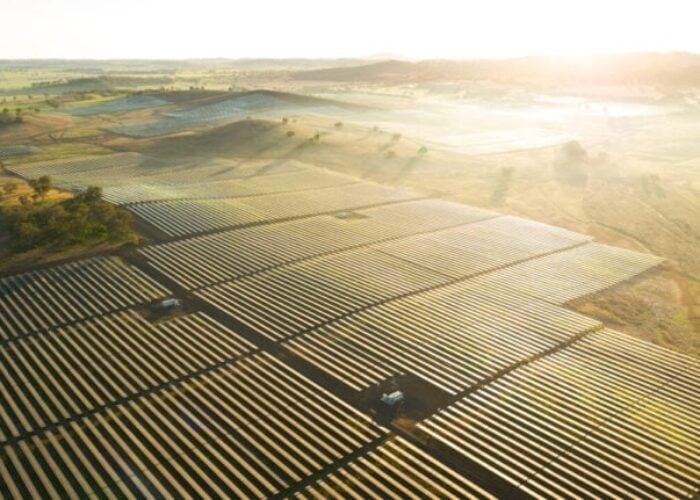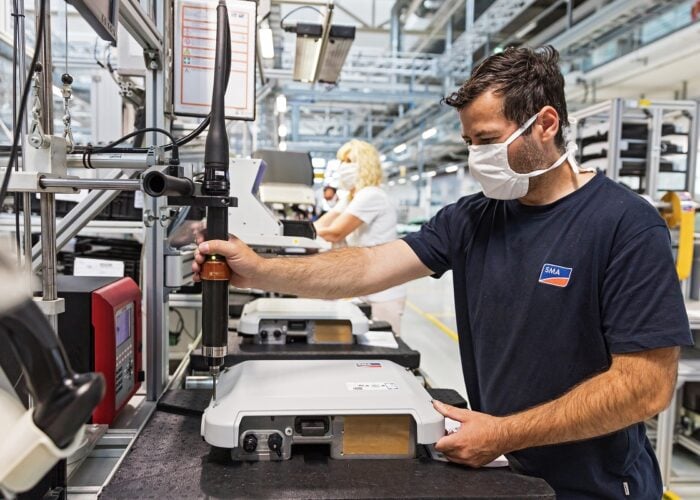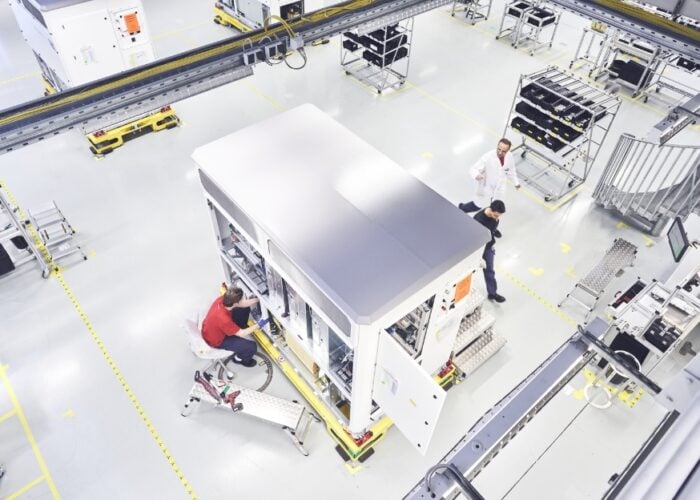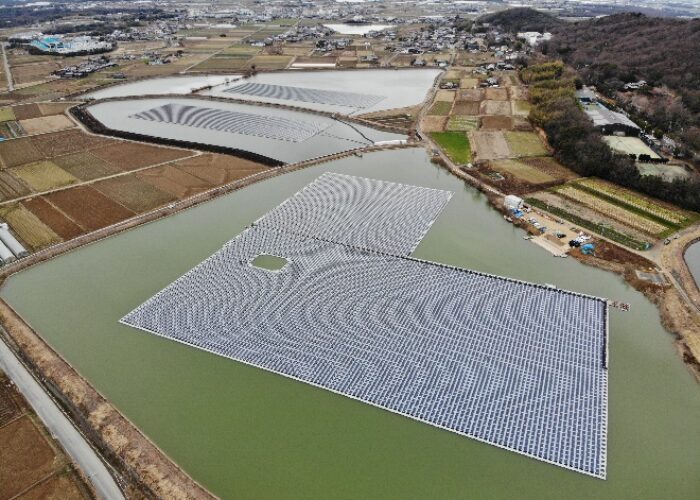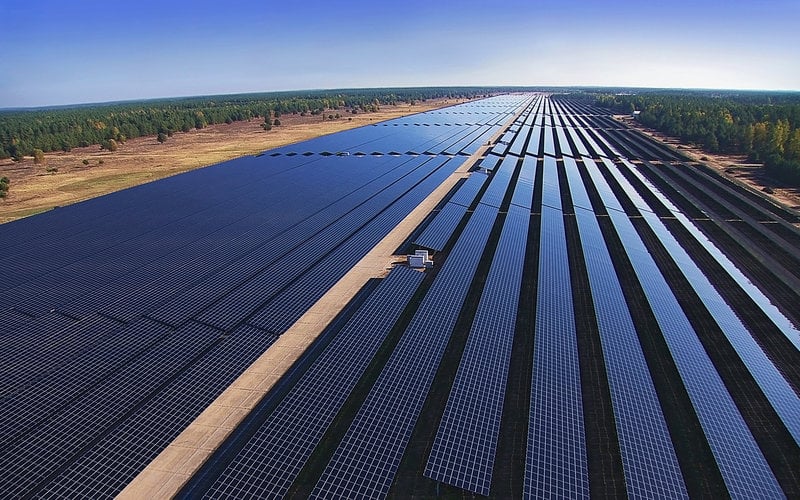
Last year saw a raft of announcements across the solar supply chain of products incorporating 1,500V architecture. Yesterday, Boston-based GTM Research predicted that deployment of 1,500V PV systems would gather pace this year before exploding in 2017 and beyond to become the industry standard. Its analyst Scott Moskowitz sheds more light on the pending shift.
1,500V was arguably one of the big talking points in 2015. What’s the current state of play?
It's something people have been talking about for at least two years now. And it's interesting in that there's some precedent here; the market had a transition to higher voltage systems several years ago, at least in the US, where systems were historically built at 600V. And that transition happened very quickly in the US. So that sets some precedents here: once the supply chain is built out and there are no code constraints the market's pretty quick to adopt higher voltage systems. It's not really a technical barrier that keeps 1,500V from being installed; it's more availability and code restrictions. And the fact that the supply chain is starting to grow and those code restrictions at least in the US have gone away, the market should start to grow very quickly.
Unlock unlimited access for 12 whole months of distinctive global analysis
Photovoltaics International is now included.
- Regular insight and analysis of the industry’s biggest developments
- In-depth interviews with the industry’s leading figures
- Unlimited digital access to the PV Tech Power journal catalogue
- Unlimited digital access to the Photovoltaics International journal catalogue
- Access to more than 1,000 technical papers
- Discounts on Solar Media’s portfolio of events, in-person and virtual
The difference is that with the 600-1000V transition, systems were already 1,000V in Europe, so there were 1,000V products everywhere – whereas now 1,500V is a new technology for everyone. It started in Europe; there were a few manufacturers and installers, particularly Belectric, with Padcon, and Comverteam, which was bought by GE, that took the lead on developing these technologies. And then First Solar really took it and ran with it.
Your main conclusion is that 4.6GW of 1,500V capacity will be installed this year. That’s still relatively small in global terms. How far could it go?
The headline is that the adoption of 1,500V PV systems them is imminent. The 4.6GW is infinitely more 1,500V systems than there were in 2015. But the thing to keep in mind here is that 4.6GW is an absolute stepping stone to where the market will be. What we believe is that once the value proposition is proven out in 2016 of 1,500V systems, the supply chain is complete and developers are building these systems and they're saving money relative to 1,000V systems, 1,500V will become the default technology choice for utility-scale systems pretty much globally.
And the value proposition here is the fact that you're using fewer overall components thus saving costs, right?
Exactly. The systems savings and differences are going to vary by geography, by site, by project type; it varies such that you can't put a defined number on it all the time. But it is pretty clear that when you install 1,500V systems you have longer strings, you have larger inverters, meaning you need fewer inverters, you have larger array blocks, and you save a lot on the components and on the labour, even though the components are more expensive on a per-watt basis, at least at the moment.

What’s the market’s attitude at the moment towards 1,500V technology?
There are two types of installers that have formed around 1,500V. There are the very aggressive companies – the First Solars, the Recurrents, the Strata Solars – who are interested in lowering costs immediately. And they're early adopters of new technologies and they hope to develop new technologies. And then you have some of your larger more traditional EPC firms that are really just trying to build out on pipeline and meet some of their cost goals. And they're a bit more conservative and they want to use technologies that have been field tested for several years. So for many people it's not just that 1,500V is something they're worried out, it's just they're taking a wait-and-see approach. They’re saying, alright, we want to see how much demand for 1,500V there is, and then if it seems like something everyone is adopting, then we'll do it next. So that's why, starting next year in 2017, you're going to see pretty wide-scale adoption.
Are there any drawbacks to going to the larger system?
There is some concern over potential-induced degradation (PID) of modules, which is why you see many of the 1,500V modules that are emerging are glass-glass. A few of them are glass-glass to prevent PID. And then a few others have talked about rather than having glass-glass, they have greater encapsulation of their PV modules to ensure PID doesn't happen. So that’s one thing people are concerned about, and it will take some time before that's proven. The other is that when you have a larger system, when you have a larger inverter, the impact of a failure on an inverter, if there is one, is greater.
How much of a concern is the reliability issue where 1,500V inverters are concerned?
Reliability is always a concern but when you look at the vendors that are putting these products on to the market and when you look at the companies that are installing them, these are best-in-class vendors and installers. And when we have talked them with vendors and asked them about any reliability concerns on a 1,500V product versus 1,000V, they've said, look we've done our homework here, there's no technical challenges that we feel people should know about, it's only a matter of time before people start using these products.
On the supply chain, generally do you think it is catching up with this new trend?
Yes, last year there was a waterfall of announcements of 1,500V products. Modules and inverters have been the last products to be really announced for 1,500V. The balance of system (BOS) landscape filled up relatively quickly – and the main reason for that is that the BOS components take less research to introduce to the market; inverters and modules are relatively more complicated. What we saw was that inverter manufacturers and module vendors were jockeying with each other to make sure they weren't introducing products before the market was ready; no one wanted to develop a product then introduce it and then not have any demand for it. So people were looking to the others to see when products would be introduced. And in 2015 what you had was a ton of product introductions. However, a lot of those were only announcements; only a few modules and inverters are currently available on the market for 1,500V. That's going to change through 2016.
Last year one of GE’s senior engineers told us to expect inverters to go much larger even than 1,500V. To what extent do you think this will happen?
We think that long term, at least in the next few years, 1,500V will be the default technology for utility-scale systems. Beyond that we don't believe there will be another marginal increase say to 2,000V or say 2,200 or 2,400. And that's for a few reasons – one is because the benefit of another marginal increase is marginal: it takes a lot of R&D to develop a new product, and there must be a lot of benefit for that R&D to be justified. The second is that 1,500V is the medium-voltage limit for the IEC. So once you go up beyond that, there's a whole new realm of product certifications and allowances. But if you look around, and GE has been the most vocal advocate of this, it's always possible that there will be systems that move into medium voltage simply because there are so many adjacent technologies from the wind industry and other power technologies.
You mentioned 1,500V would become the default for utility PV. What about commercial or smaller scales?
1,500V could get used for commercial systems, but it depends on geography. There was a 1,500V rooftop system installed in the UK this year, so it's possible, especially for locations that are dictated by the IEC. In North America we don't anticipate it because the national electrical code as written and as it's expected to be written in the 2017 revision will prevent 1,500V being used for commercial projects in the US. However, it is possible that 1,500V gets used commercially elsewhere. But we don't expect that to be as clear a transition as it will be for the utility market over the next few years.

